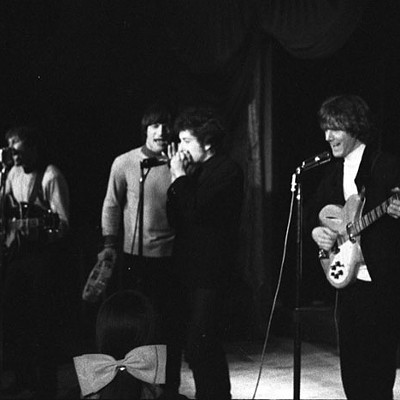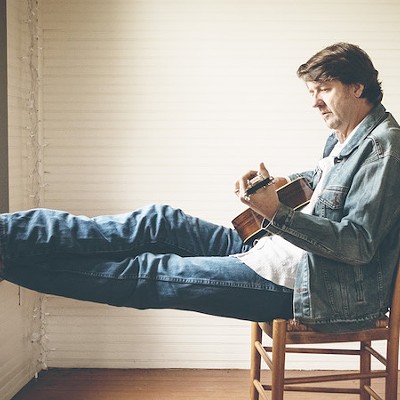Bob Marley: The Untold Story By Chris Salewicz
Music journalist Chris Salewicz hasn't been afraid to tackle the big names in print. In addition to his work as a features writer at NME from 1974-81 and active freelancer, he's previously penned biographies on Paul McCartney, Jimi Hendrix, Mick & Keef and, most recently, Joe Strummer.
With this new effort, Salewicz turns his attention to the Tuff Gong himself. Rcks Off spoke with him - well, actually e-mailed - he's in England, and overseas phone calls are expensive! - about the reggae king's life, prodigious brood, the origins of rap and how Houstonian Johnny Nash helped launch Marley's career.
Rocks Off: There have already been a number of Marley biographies, memoirs from his wife and manager, and one book (Catch a Fire), which has been considered "definitive." What did you want to do differently?
Chris Salewicz: I love Tim White's Catch a Fire. Tim was a great friend, and it was very, very sad when he died suddenly in 2002. When I'd written the text for Songs of Freedom, the authorized-by-Bob's-family picture book I did with photographer Adrian Boot, Tim had commended me on it, and said he didn't understand why no one else had written a full-scale biography of Bob. I always felt that gave me the impetus for this.
From 1995 to 1997, I lived in Jamaica. Almost every day, it seemed, I would gain new glimpses about Bob's life; small details often, like the location of the woman who would give him fresh cow's milk - hard to get in Jamaica then - for his morning porridge after his run. Or the fact that he had briefly owned Goldeneye, Ian Fleming's former home on the Jamaican north coast. Or bigger tales - various versions, for example, of the sad demise of Peter Tosh.
Although both Tim's and Stephen Davis's books are exemplary, much new information has emerged since they were published in the mid-1980s. Of course, there have been various books from close associates of Bob, notably by his mother and by his wife. By necessity, however, such books are always written from a particular angle and aspect. I wanted to closely look at who Bob was, at what really went on in the gap between his art and his life.
RO: What about the title? What is the "Untold Story"?
CS: The title is meant to be a twist on the line "half the story has never been told" in the song "Get Up, Stand Up." But I've noticed that no one whatsoever seems to have gotten that!
RO: What kind of research did you do?
CS: My research has lasted for over 35 years, since I first saw The Wailers play at London's Speakeasy club in May 1973, a life-changing experience. Of course, visiting the Gun Court with Bob in 1979 was a catalyst, as were my subsequent experiences with him on that, my second trip to Jamaica.
During the subsequent 25 or so years, I interviewed almost all the key players. More importantly, perhaps, I spoke to countless individuals on the fringes of Bob's life. In January 2008, I spent a month locked in the world's leading Bob Marley archive, at the Los Angeles home of the splendid Roger Steffens, who afforded me every courtesy in opening up his files.
RO: You posit the theory that Peter Tosh was just as talented as Bob, but for various reasons would never achieve the kind of overall popularity he did. What was it about Marley that has made him worldwide the most recognizable face and voice of reggae music?
CS: He never wrote a bad song, and his songs contained the essence of great truths. His life in the simplicity of the country had imbued him with an understanding of his existence that came from watching things grow.
Plus, in a way that is unlike any other contemporary singing star, he was fired by his public love of God - of the good. Utterly charismatic as a performer, his shows channeled the soul of positivity, with utterly transcendent consequences.
It is also naïve to pretend that Bob's physical appearance didn't help: his Anglo-Saxon features and light skin perhaps made him less threatening to white audiences.
RO: Since we're in Houston, tell me a bit more about Johnny Nash's contribution to helping launch Bob's career.
CS: Nash traveled to Jamaica to record in 1966, where he had a big hit there the previous year with "Let's Move and Groove Together." He was the first international artist to regularly co-opt Jamaican rhythms into his tunes. When Nash and Bob Marley met, something clicked. They began recording together, the work overseen by [Nash's manager] Danny Sims, who ensured the songs written by Bob and the Wailers were aimed at the U.S. market, with mainstream themes - other than Rastafari, for example.
The relationship with Danny Sims and Johnny Nash is crucial in the development of the Wailers. Not only did the group enjoy a lengthy creative burst, but they were put on regular wages, lifting them out of the financial mire for the first time.






